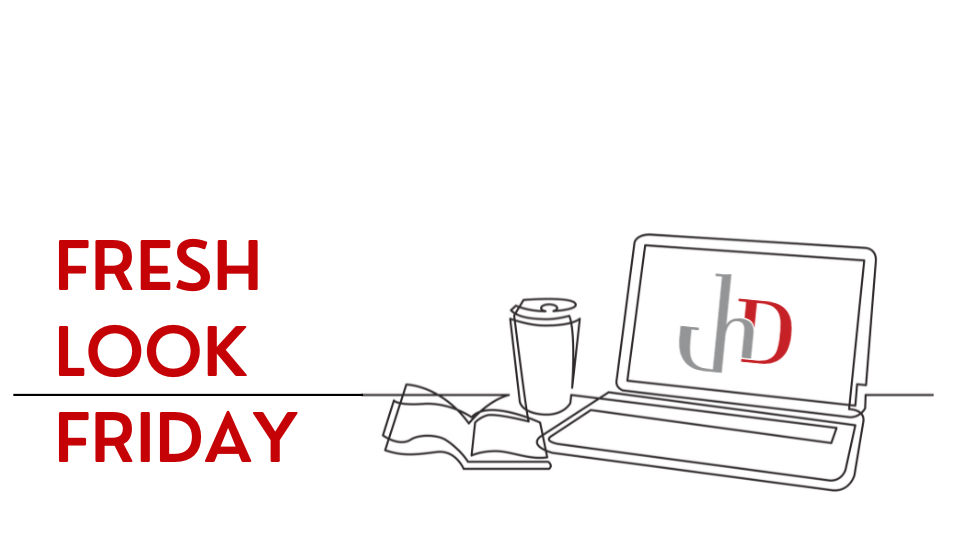
Design Series: Color Theory & Using Color In Web Design
When it comes to design, throwing a bunch of colors around a web page or in a logo hoping to grab attention may create an uncomfortable view for your users. However, incorporating color theory into your design strategy can help you understand how to effectively use color in your design.
What is color theory?
Color theory is simply understanding how colors work together, convey meaning, create moods, and influence perception. It looks at the relationships between colors, which can help you create harmonious designs.
In an episode of the Chromosphere: The Color Theory Podcast, hosted by Ed Charbonneau, he discusses the phenomenon of the appearance of the combination of red, white, gray, and black in his surroundings. He emphasized the frequent occurrence of these colors in the world around him and how they aesthetically just always seem to work.
Specifically, he noticed that in his state of Minnesota, 95-97% of the cars he sees on the street are either white, black, or gray. If they are colorful, they are red, like fire-engine or stop-sign red.
The black, whites, and grays are very neutral. There's no lean into yellow, blue, or green-but perfectly neutral. If he sees a large lot with a sea of cars, he spots hundreds of gray, white, and black cars, with a few green and blue ones as outliers in the parking lot—and of course, some flashy reds that pop out like sore thumbs.
Do you notice this phenomenon? If you haven't, you will. Think about Mickey Mouse. He has some yellow in his character, but overall, he's black, white, and red. And, this is also the same color combination we use for our brand!
Ed is an artist. But, when it comes to websites in particular, color theory determines how various color decisions or combinations, such as the same Ed notices, can dictate how the user interacts with your website. How?
Red light has the longest wavelength on the color spectrum, putting it at the lowest frequency with the slowest speed. Green falls in the middle with a medium frequency, while blue has the highest and fastest frequency. This is why stop lights are red, as they are visible from longer distances than green or blue.
When we try to focus on multiple, intense colors at once, the lens in our eye stretches and bunches up, causing our muscles to strain in an attempt to bring everything into focus. This causes a disparity in our sight while stimuli (intense colors) go straight to the brain from the optic nerve. This gives your mind a lot of guessing room about what you are actually seeing and where it is within your space.
Why does this matter?
Looking at too many conflicting colors can cause discomfort. Google chromostereopsis and you’ll see what we mean.
It takes extra work for your mind to register super saturated, intense colors. This is important, because it can happen on a microscale, too. Including stop-sign red, for example, in part of your design should be strategic. You should be mindful of color choices, even in small details.
And ultimately, the thought is that maybe cars have shifted to these neutral colors over time so that drivers can better see red tail lights without too many conflicting colors, like canary yellow, from car paint.
Using Color In Your Web Design
Using a color wheel is a great way to start understanding the basics of color theory. A color wheel shows the relationship of different colors and how they interact with each other. With the right combination of colors, you can create a visually pleasing, engaging experience for your users.
A few things to keep in mind while creating a color scheme:
- Choose 1-3 colors as the main focus
- Use contrasting colors to make elements stand out
- Keep it simple and unified with light/dark shades of each
We recommend choosing three colors for your palette: a primary color, secondary color, and accent color. Then, use the 60/30/10 rule to apply these colors in your website design. According to this rule, 60% of the color used should be the main color, 30% the secondary color, and 10% the accent color. Of course, this is a general rule and some rules can be broken.
Types of Colors on The Color Wheel
Primary Colors: Red, Blue, Yellow
Secondary Colors: Purple, Green, Orange
Tertiary Colors: Complementary colors such as red-orange and blue-green
Analogous Colors: Colors side by side on the color wheel, such as red, orange, and yellow or blue, green, and purple
Monochromatic Colors: Monochromatic color schemes use various shades of one color
Color Theory: The Meaning of Colors
Color theory includes the psychology of color, unveiling how colors impact people's perceptions and convey meaning. Color influences judgment, evokes emotions, and shapes brand identity. The power of color cannot be underestimated by artists and designers. As such, understanding color psychology is critical to effective advertising and design, helping you select the best colors for your brand message.
Every color can have different contrasts, hues, and vibrancies, which all affect the overall mood of your design, but in general, here is a list of the meaning of colors according to color theory:
- Red - strength, passion, and urgency
- Orange - energy and enthusiasm
- Yellow - optimism and joy
- Green - growth and nature
- Blue - trust and reliability
- Purple - creativity and wisdom
- White - purity, cleanliness, and innocence
- Black - power, strength, and sophistication
While these are just some basics for choosing color in web design, you don’t have to choose your colors out of thin air. Consider their connotations and interactions to create an appealing design. With practice, you can make your projects stand out! Need guidance? We’ll help you with a unique color palette that tells your story. Just fill out the form below and let’s get started!
